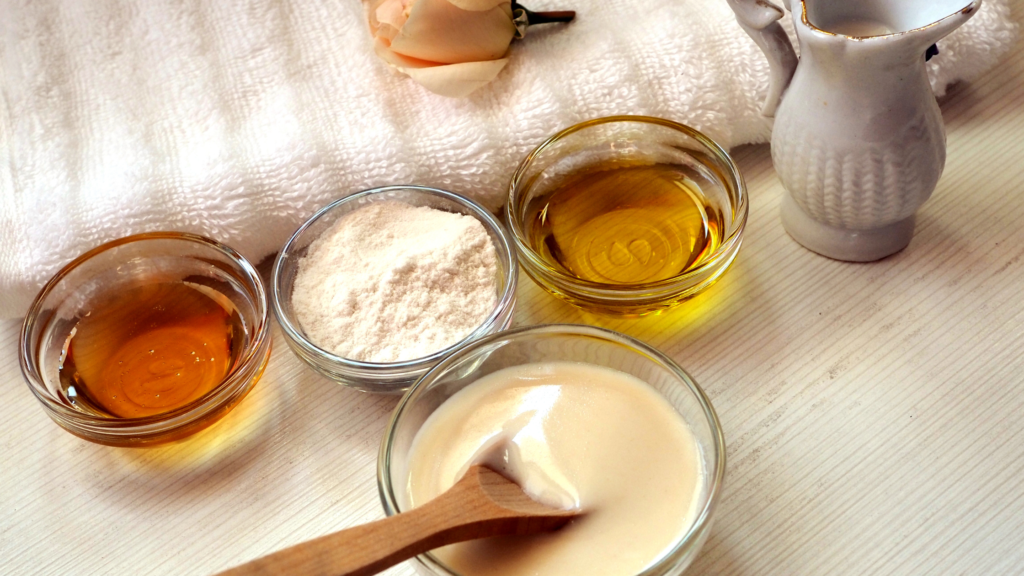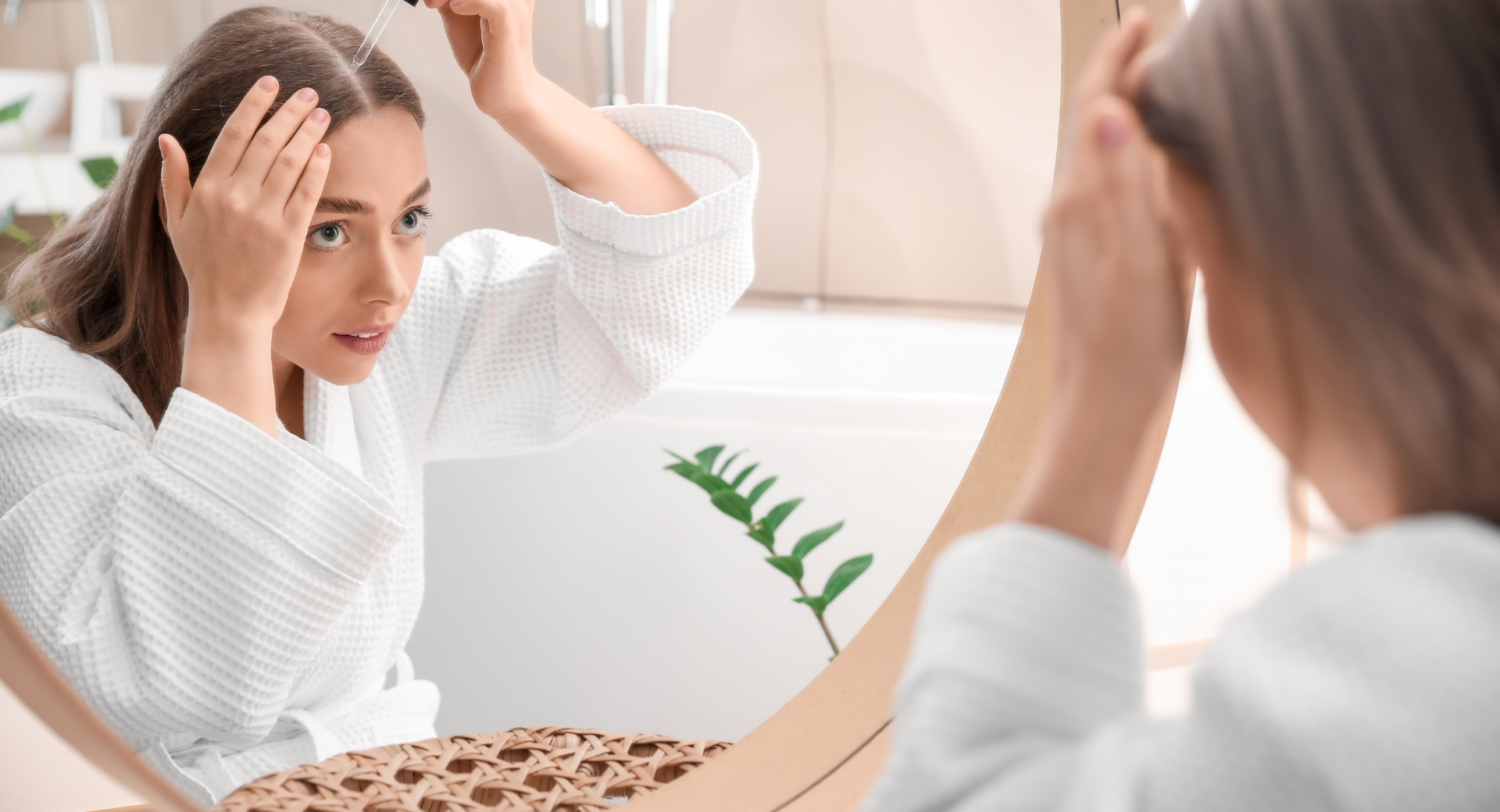Welcome to my comprehensive guide on stopping hair breakage naturally! If you’re struggling with fragile hair that breaks easily, you’re not alone. Hair breakage is a common issue that affects many people, often leading to frustration and a sense of helplessness. The good news is that there are effective, natural solutions that can help you achieve stronger, healthier hair.
In this guide, we’ll explore various natural methods to prevent and treat hair breakage. From understanding the causes and signs of breakage to discovering simple home remedies and lifestyle changes, we’ve got you covered. Whether you’re looking to stop hair breakage instantly or seeking long-term solutions for severe hair thinning, this guide provides practical advice based on proven results.
My goal is to offer you an easy-to-follow resource that empowers you to take control of your hair health. By the end of this guide, you’ll have a clear understanding of how to protect your hair from breakage and nurture it back to its natural strength and beauty.
So, let’s dive in and start your journey to stronger, healthier hair! Whether you’re dealing with hair breaking off in the middle, severe thinning, or just want to enhance your hair’s natural resilience, this guide is your go-to resource for all things hair care.
Understanding Hair Breakage

What is Hair Breakage?
Hair breakage occurs when strands of hair snap or break, resulting in shorter, fragmented pieces rather than falling out from the root. Unlike hair loss, which involves shedding of whole strands, breakage specifically refers to the damage along the hair shaft. This damage can be due to various factors, including physical stress, chemical exposure, and environmental conditions.
The structure of a hair strand consists of three layers: the cuticle, cortex, and medulla. The cuticle is the outermost layer, composed of overlapping cells that protect the inner parts of the hair. When the cuticle is damaged, the inner layers become exposed, leading to weakness and breakage.
Common Causes of Hair Breakage
Understanding what causes hair breakage is the first step in preventing it. Here are some common culprits:
- Excessive Heat Styling: Using heat tools like straighteners, curling irons, and blow dryers can strip the hair of its natural moisture, making it brittle and prone to breakage.
- Chemical Treatments: Frequent coloring, perming, or relaxing treatments weaken the hair structure, leading to breakage.
- Improper Hair Care Routines: Rough handling, such as brushing wet hair aggressively or using harsh shampoos, can damage the hair cuticle.
- Environmental Stressors: Factors like sun exposure, wind, and pollution can degrade the hair’s protective outer layer, causing dryness and breakage.
- Nutritional Deficiencies: A lack of essential nutrients, such as vitamins and minerals, can affect hair health, making it more susceptible to damage.
- Health Conditions: Certain medical conditions, including hormonal imbalances and scalp infections, can contribute to hair fragility and breakage.
By identifying and addressing these causes, you can significantly reduce the risk of hair breakage and promote stronger, healthier hair. In the next sections, we’ll explore immediate steps you can take and natural remedies to help prevent and treat hair breakage effectively.
Signs of Hair Breakage
Recognizing the signs of hair breakage early can help you take action to prevent further damage. Here are some common indicators to look out for:
Visible Indicators
- Frizz and Flyaways: One of the most noticeable signs of hair breakage is the presence of frizzy strands and flyaways. These are usually shorter hairs that stick out from the main body of your hair, indicating breakage along the shaft.
- Split Ends: Split ends occur when the protective outer layer of the hair cuticle wears away, causing the hair to split into two or more segments at the end. This is a clear sign of damaged and weakened hair.
- Shorter, Uneven Lengths: If you notice that some sections of your hair are significantly shorter than others, it could be due to breakage. This can make your hair look uneven and less voluminous.
- Hair Breaking Off in the Middle: Sometimes, hair breakage can occur in the middle of the strand, not just at the ends. This can be caused by excessive styling or physical stress on the hair.
Common Areas Affected
Hair breakage can affect different parts of the head, but some areas are more prone to damage due to their exposure or the way they are handled:
- Hairline: The hair around the hairline is often finer and more delicate, making it more susceptible to breakage from styling or wearing tight hairstyles.
- Crown: The crown of the head can experience breakage due to excessive teasing or rough handling.
- Nape of the Neck: Hair at the nape is often subjected to friction from clothing and accessories, leading to breakage.
Identifying these signs early can help you take steps to address the issue and prevent further damage. In the next section, we’ll discuss immediate steps you can take to stop hair breakage and start your journey toward healthier hair.
Immediate Steps to Stop Hair Breakage

If you’re experiencing hair breakage, taking immediate action can help prevent further damage and start the healing process. Here are some practical steps you can implement right away:
Gentle Hair Handling
- Avoid Rough Towel Drying: After washing your hair, gently pat it dry with a soft towel instead of rubbing it. This reduces friction and helps prevent breakage.
- Detangle with Care: Use a wide-tooth comb or a detangling brush to gently work through knots and tangles, starting from the ends and working your way up to the roots. Avoid tugging or pulling on the hair.
- Opt for Loose Hairstyles: Tight hairstyles like ponytails, buns, and braids can put strain on your hair, especially around the hairline and nape. Opt for looser styles that reduce tension and minimize breakage.
Choosing the Right Hair Tools
- Wide-Tooth Combs and Soft-Bristle Brushes: Use tools that are gentle on your hair. Wide-tooth combs help detangle without causing breakage, and soft-bristle brushes are less abrasive on the hair shaft.
- Silk or Satin Accessories: Silk or satin hair ties, pillowcases, and scarves can reduce friction and prevent breakage compared to rougher fabrics.
Reducing Heat and Chemical Exposure
- Limit Heat Styling: Minimize the use of heat styling tools such as straighteners, curling irons, and blow dryers. When you do use them, always apply a heat protectant spray to shield your hair from high temperatures.
- Be Cautious with Chemical Treatments: If possible, avoid harsh chemical treatments like bleaching, coloring, and perming. These processes can weaken the hair shaft, making it more prone to breakage.
- Air Dry Whenever Possible: Let your hair air dry naturally instead of using a blow dryer. This method reduces the risk of heat damage and preserves the natural moisture in your hair.
Moisturizing and Hydrating
- Deep Conditioning Treatments: Incorporate deep conditioning treatments into your hair care routine at least once a week. These treatments provide intense moisture and help strengthen the hair.
- Hydrating Hair Masks: Use hair masks made with hydrating ingredients like avocado, honey, and yogurt. These masks can nourish and repair dry, damaged hair, reducing the likelihood of breakage.
By implementing these immediate steps, you can create a supportive environment for your hair to heal and grow stronger. Next, we’ll explore natural remedies that can further enhance your hair’s resilience and promote healthy growth.
Natural Remedies for Hair Breakage and Growth

Incorporating natural remedies into your hair care routine can be a gentle and effective way to combat hair breakage and promote healthy growth. These remedies often use readily available ingredients and can be easily made at home. Here are some tried-and-true options:
Nutrient-Rich Diet
- Foods for Strong Hair: What you eat has a significant impact on your hair health. Foods rich in vitamins and minerals, such as leafy greens, nuts, seeds, and lean proteins, can strengthen your hair from the inside out. For instance, spinach and kale are high in iron and vitamin A, both crucial for hair growth.
- Key Nutrients:
- Biotin: Found in eggs, nuts, and whole grains, biotin supports hair structure and promotes growth.
- Vitamin E: This antioxidant, found in almonds and avocados, helps repair hair damage and improve scalp circulation.
- Omega-3 Fatty Acids: Present in fish, flaxseeds, and walnuts, these fats nourish hair and reduce inflammation that can lead to hair loss.
Homemade Hair Masks
- Avocado, Egg, and Honey Mask: Avocado is rich in healthy fats, eggs provide protein, and honey is a natural humectant that locks in moisture.
- Recipe: Mash one ripe avocado, mix with one egg, and add a tablespoon of honey. Apply to damp hair, focusing on the ends, and leave for 20-30 minutes before rinsing with cool water.
- Coconut Oil and Aloe Vera Mask: Coconut oil penetrates the hair shaft to moisturize deeply, while aloe vera soothes the scalp and promotes growth.
- Recipe: Mix two tablespoons of coconut oil with one tablespoon of aloe vera gel. Apply to the hair and scalp, leave for at least an hour, then wash with a mild shampoo.
Herbal Treatments
- Rosemary: This herb stimulates blood circulation to the scalp, promoting hair growth and preventing premature graying.
- Usage: Brew a strong rosemary tea, let it cool, and use it as a final rinse after shampooing. You can also massage rosemary oil into the scalp diluted with a carrier oil like jojoba.
- Amla (Indian Gooseberry): Amla is packed with vitamin C and antioxidants, which strengthen the hair and improve its overall health.
- Usage: Use amla powder to create a hair mask or add a few drops of amla oil to your scalp massage routine.
- Hibiscus: Hibiscus flowers and leaves are known for their hair-strengthening properties and ability to stimulate growth.
- Usage: Make a paste from hibiscus leaves or use hibiscus oil to massage the scalp. Leave it on for 30 minutes before rinsing.
These natural remedies not only help to reduce hair breakage but also contribute to overall hair health, making your hair stronger, shinier, and more resilient. In the next section, we’ll cover home remedies specifically targeted at addressing both hair breakage and hair loss, providing a holistic approach to hair care.
Home Remedies for Hair Breakage and Hair Loss

Home remedies offer a simple yet effective way to tackle both hair breakage and hair loss. By using natural ingredients that are often found in the kitchen, you can create treatments that nourish the scalp and strengthen the hair. Here are some popular remedies to try:
Aloe Vera and Coconut Oil Treatment
Benefits: Aloe vera is known for its soothing properties, helping to calm the scalp and reduce inflammation. Coconut oil penetrates deeply into the hair shaft, providing essential fatty acids that strengthen and moisturize the hair.
Recipe and Application:
- Mix two tablespoons of aloe vera gel with two tablespoons of coconut oil.
- Apply the mixture to your scalp and hair, focusing on areas with breakage and thinning.
- Massage gently for a few minutes to improve blood circulation and ensure the mixture is evenly distributed.
- Leave the treatment on for at least 30 minutes, or overnight for deeper conditioning.
- Rinse thoroughly with lukewarm water and a mild shampoo.
Rice Water Rinse
Benefits: Rice water is rich in amino acids, vitamins, and minerals that nourish the hair and strengthen the roots. It can improve hair elasticity, reduce surface friction, and add shine.
Recipe and Application:
- Rinse a cup of rice thoroughly to remove any impurities.
- Soak the rice in two cups of water for 15-30 minutes, stirring occasionally.
- Strain the rice water into a clean container and allow it to ferment at room temperature for 24-48 hours (fermented rice water is more potent).
- After shampooing, pour the rice water onto your hair and scalp.
- Massage gently for a few minutes, then leave it on for 10-15 minutes.
- Rinse thoroughly with water.
Scalp Massages
Benefits: Scalp massages help to stimulate blood flow to the hair follicles, which can promote healthier hair growth. Using oils like olive oil, castor oil, or rosemary oil can enhance the benefits by providing nourishment and reducing hair breakage.
How to Do It:
- Warm a small amount of oil (optional) to a comfortable temperature.
- Use your fingertips to apply the oil to your scalp.
- Massage in small, circular motions, covering the entire scalp.
- Focus on the hairline, nape, and crown areas, where breakage and thinning are often most noticeable.
- Continue massaging for at least 5-10 minutes.
- Leave the oil in for a few hours or overnight, then wash with a gentle shampoo.
These home remedies can be easily incorporated into your hair care routine to help reduce breakage and hair loss. They offer a natural and cost-effective way to strengthen your hair and promote healthy growth. In the following section, we’ll discuss how to recognize severe hair breakage and thinning and when to seek professional help.
Recognizing Severe Hair Breakage and Thinning
While many cases of hair breakage and thinning can be managed with natural remedies and improved hair care routines, there are instances where the damage may be more severe. Recognizing the signs of severe hair issues can help you determine when it’s time to seek professional advice or consider more intensive treatments.
Signs of Severe Hair Breakage and Thinning
- Widespread Breakage: If you notice breakage across large sections of your hair, rather than just isolated strands, this could indicate more severe damage. This type of breakage often leads to an overall reduction in hair density and volume.
- Visible Thinning: Significant thinning of the hair, especially if it’s noticeable in certain areas like the crown or temples, can be a sign of underlying issues such as hormonal imbalances, nutritional deficiencies, or scalp conditions.
- Persistent Hair Fall: While some hair shedding is normal, an increase in the amount of hair you lose daily, or finding clumps of hair in your brush or shower, may be a cause for concern. This is especially true if it continues over a prolonged period.
- Scalp Issues: Conditions like dandruff, psoriasis, or fungal infections can weaken the hair and contribute to breakage and loss. If you experience persistent itching, redness, or scaling, it’s important to address these issues promptly.
When to Seek Professional Help
- Dermatologist or Trichologist Consultation: If home remedies and over-the-counter treatments are not effective, or if you’re experiencing severe symptoms, it’s advisable to consult with a dermatologist or trichologist. These specialists can diagnose underlying conditions and recommend appropriate treatments.
- Medical Tests and Treatments: In some cases, medical tests may be necessary to identify causes such as hormonal imbalances, thyroid issues, or deficiencies in vitamins and minerals. Treatments may include medication, topical applications, or even therapies like low-level laser therapy (LLLT) for stimulating hair growth.
- Professional Hair Treatments: Depending on the severity of the hair damage, professional treatments such as deep conditioning treatments, protein treatments, or hair restoration procedures might be recommended. These can provide intensive care and help restore the health and appearance of your hair.
Recognizing when your hair concerns go beyond what can be managed at home is crucial for maintaining overall hair health. Seeking professional guidance ensures that you receive the appropriate care and treatment, which can prevent further damage and promote recovery. In the final section, we’ll summarize key takeaways and provide additional tips for maintaining healthy, resilient hair.
Preventing Future Hair Breakage: Long-term Tips for Healthy Hair

Taking proactive steps to prevent future hair breakage is crucial for maintaining strong, healthy hair. By incorporating these long-term tips into your hair care routine, you can minimize damage and support optimal hair growth.
Consistent Hair Care Routine
- Regular Trims: Regular trims help remove split ends and prevent them from traveling up the hair shaft, which can lead to further breakage. Aim for a trim every 6-8 weeks, depending on your hair’s condition and growth rate.
- Gentle Cleansing: Use a mild shampoo that suits your hair type and scalp condition. Avoid harsh sulfates and opt for products that contain natural, nourishing ingredients. Shampoo your hair as needed, but not excessively, to avoid stripping away natural oils.
- Conditioning and Moisturizing: Always follow up with a conditioner after shampooing to restore moisture and improve hair elasticity. Deep condition your hair weekly to provide extra hydration and repair.
Protective Hairstyles
- Avoid Tight Styles: Opt for loose hairstyles that minimize tension on the hair and scalp. Tight braids, ponytails, and buns can cause breakage, especially around the hairline and nape.
- Protective Styling: Styles like braids, twists, and buns can protect the ends of your hair from environmental damage and reduce manipulation. However, ensure these styles are not too tight and give your hair a break between styles.
Using the Right Tools and Techniques
- Heat Protection: If you use heat styling tools, always apply a heat protectant spray to shield your hair from high temperatures. Limit the use of these tools and opt for lower heat settings whenever possible.
- Quality Hair Tools: Use wide-tooth combs, soft-bristle brushes, and silk or satin hair accessories. These tools reduce friction and prevent snagging, which can lead to breakage.
- Sleeping on Silk or Satin: Silk or satin pillowcases reduce friction on your hair while you sleep, helping to prevent breakage and keep your hair smooth.
Healthy Lifestyle and Nutrition
- Balanced Diet: Ensure you’re consuming a diet rich in vitamins, minerals, and proteins that support hair health. Nutrients like biotin, zinc, iron, and vitamins A, C, and E are essential for strong, healthy hair.
- Hydration: Staying well-hydrated is crucial for maintaining hair and scalp health. Drink plenty of water daily to keep your hair hydrated from the inside out.
- Manage Stress: High stress levels can contribute to hair breakage and loss. Incorporate stress-reducing practices like regular exercise, meditation, or hobbies that you enjoy.
By adopting these preventive measures, you can significantly reduce the risk of hair breakage and promote healthy, resilient hair. Remember, consistency is key in any hair care regimen. With time and dedication, you’ll see positive changes in the health and appearance of your hair.
Conclusion
Taking care of your hair is an ongoing journey that requires attention to detail and consistency. By understanding the causes and signs of hair breakage and implementing natural remedies and preventive strategies, you can achieve stronger, healthier hair. Whether you’re dealing with minor breakage or more severe thinning, the tips and treatments outlined in this guide can help you restore and maintain your hair’s health and vitality.
Remember, every person’s hair is unique, and it may take some experimentation to find the right combination of treatments and care routines that work best for you. Be patient, and treat your hair with the kindness and care it deserves. Here’s to your journey toward beautiful, resilient hair!
FAQs
1. Can hair breakage be reversed?
Hair breakage itself cannot be reversed because once the hair is broken or split, it cannot heal itself. However, you can prevent further breakage by trimming damaged ends, improving your hair care routine, and using strengthening treatments.
2. How often should I use a deep conditioner?
For most hair types, using a deep conditioner once a week is sufficient. If your hair is particularly dry or damaged, you may benefit from deep conditioning treatments more frequently, such as twice a week.
3. What are the best oils for preventing hair breakage?
Some of the best oils for preventing hair breakage include coconut oil, argan oil, jojoba oil, and olive oil. These oils provide essential nutrients, help lock in moisture, and protect the hair from damage.
4. Is it okay to use heat styling tools if I have hair breakage?
While it is generally best to limit the use of heat styling tools if you have hair breakage, if you must use them, always apply a heat protectant spray. Use the lowest effective heat setting and avoid using heat tools daily.
5. Can diet really affect hair breakage?
Yes, diet plays a crucial role in the health of your hair. A balanced diet rich in vitamins, minerals, and proteins supports hair strength and growth. Nutrient deficiencies can lead to weak, brittle hair and increased breakage.
6. Are natural remedies effective for treating hair breakage?
Natural remedies can be effective for treating and preventing hair breakage, especially when used consistently. Ingredients like aloe vera, coconut oil, and avocado are known for their moisturizing and strengthening properties.
7. How can I protect my hair while sleeping?
To protect your hair while sleeping, consider using a silk or satin pillowcase, which reduces friction and helps prevent tangles and breakage. Alternatively, you can wear a silk or satin bonnet or scarf.
8. What should I do if my hair is breaking off in the middle?
If your hair is breaking off in the middle, it may be due to excessive styling, chemical treatments, or physical stress. Reduce the use of heat and chemicals, adopt gentler hair care practices, and consider using strengthening treatments and masks.
9. When should I see a professional for hair breakage?
You should see a professional, such as a dermatologist or trichologist, if you experience severe hair breakage, significant thinning, or persistent scalp issues that do not improve with home treatments. They can provide specialized care and treatment options.
Summary and Final Tips for Healthy Hair

In summary, managing and preventing hair breakage involves a combination of immediate actions, natural remedies, and long-term care. By understanding the signs of hair breakage and adopting the right practices, you can maintain healthier, stronger hair. Here’s a recap of the key points:
Key Takeaways
- Recognize the Signs: Identifying early signs of hair breakage, such as frizz, split ends, and shorter lengths, is crucial for taking timely action to prevent further damage.
- Immediate Steps: Handle your hair gently, use the right tools, and minimize heat and chemical exposure to prevent immediate breakage. Moisturize and hydrate your hair regularly to keep it strong.
- Natural Remedies: Incorporate natural remedies like nutrient-rich diets, homemade hair masks, and herbal treatments to nourish your hair and support growth. These remedies provide essential nutrients and improve hair health over time.
- Address Severe Breakage: If you notice widespread breakage, significant thinning, or persistent scalp issues, seek professional help. Early intervention can help address underlying problems and prevent further damage.
- Prevent Future Breakage: Establish a consistent hair care routine that includes regular trims, gentle cleansing, and protective hairstyles. Use quality tools and maintain a healthy lifestyle to support overall hair health.
Final Tips for Maintaining Healthy Hair
- Stay Consistent: Consistency is key in any hair care routine. Regularly follow your chosen treatments and preventive measures to see the best results.
- Listen to Your Hair: Pay attention to how your hair responds to different products and practices. Adjust your routine as needed based on its condition and needs.
- Be Patient: Hair health improvements take time. Give your hair the time it needs to recover and grow stronger.
- Embrace Natural: Whenever possible, opt for natural and gentle hair care products. Avoid harsh chemicals and excessive styling to keep your hair in its best condition.
- Stay Informed: Continue to educate yourself about hair care and stay updated on new tips and treatments. Knowledge is a powerful tool in maintaining and improving your hair health.
By implementing these strategies and tips, you can effectively manage hair breakage, promote growth, and enjoy healthier, more resilient hair. Remember, taking good care of your hair is a journey that involves patience, consistency, and a commitment to healthy practices. Here’s to beautiful, strong, and healthy hair!
Leave a Reply
You must be logged in to post a comment.



